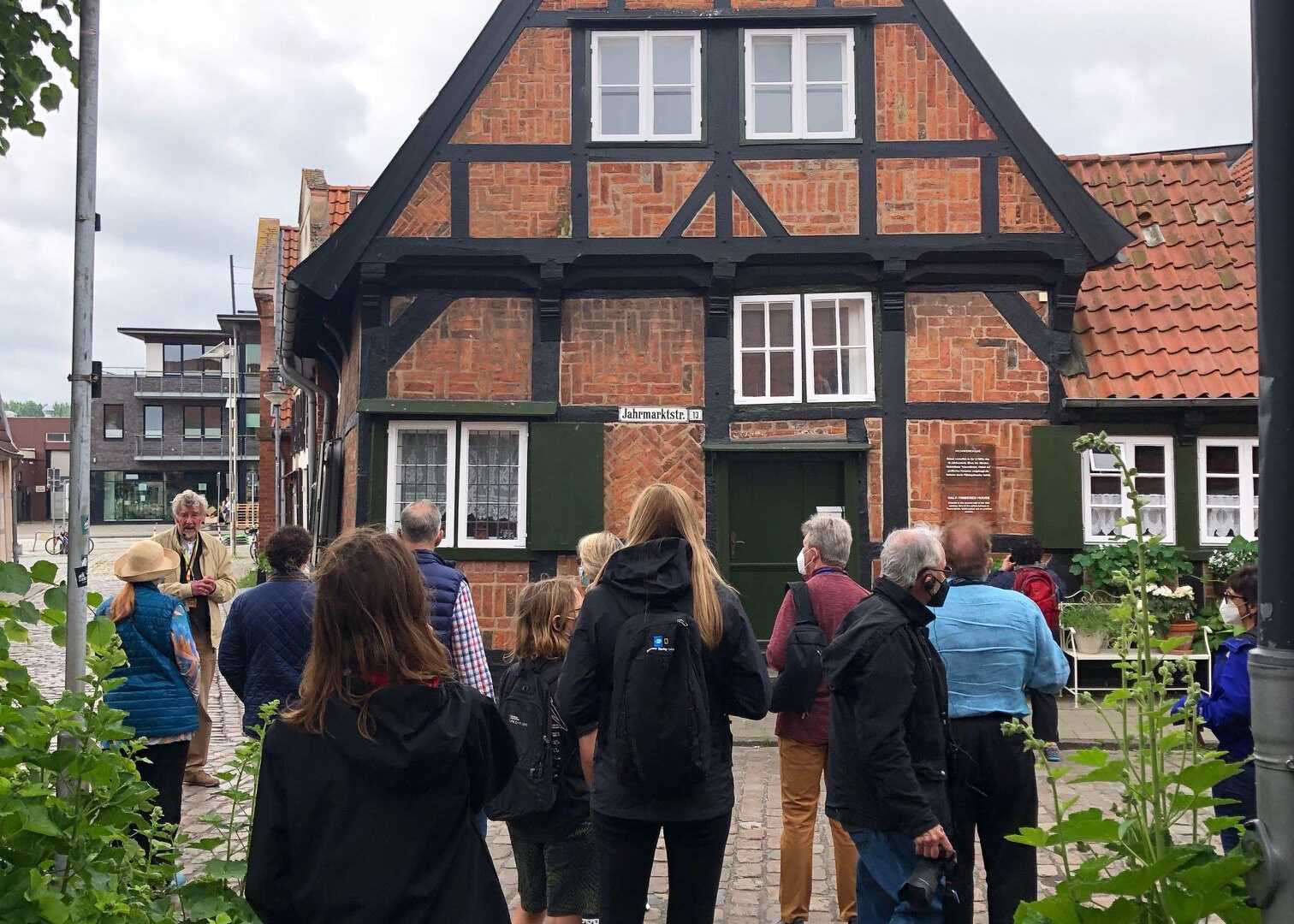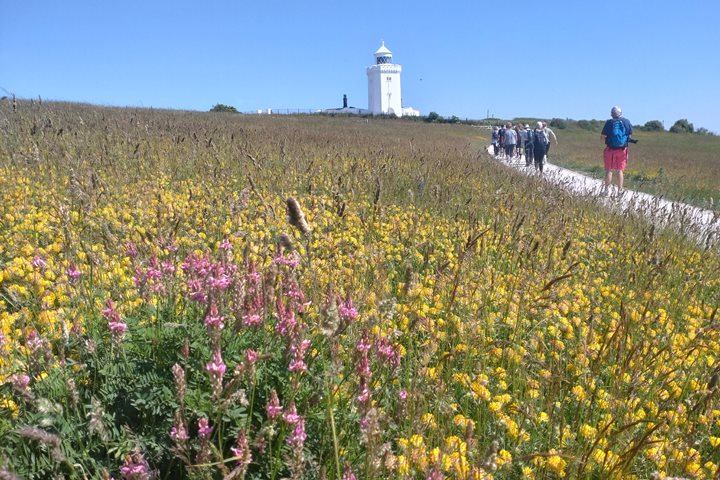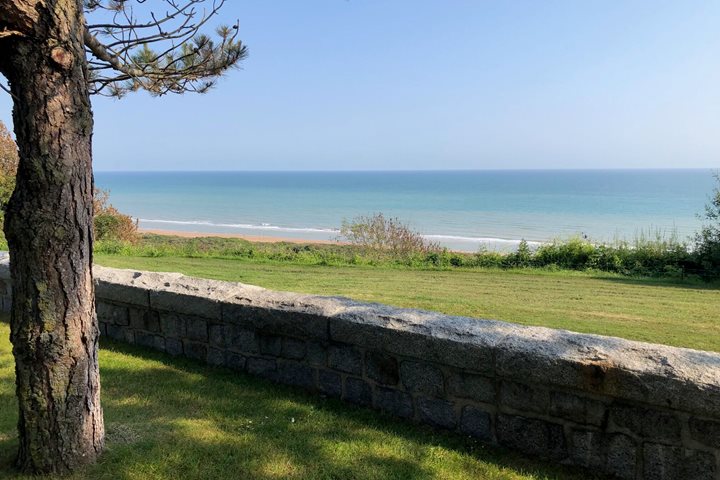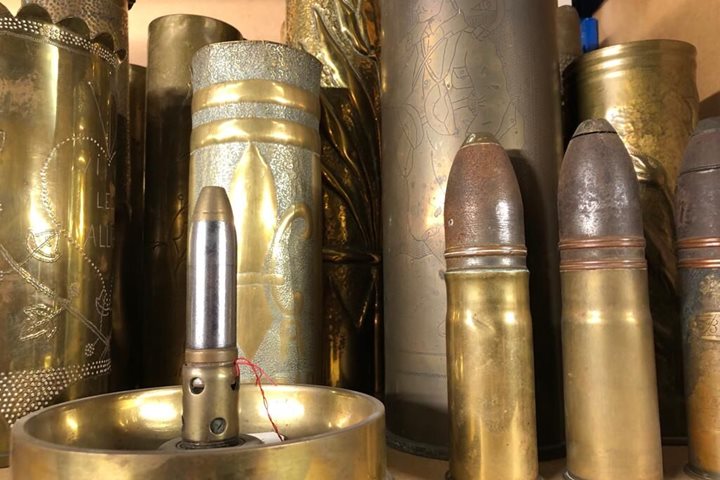National Geographic Explorer sailed up the scenic Trave River to the ‘Queen of the Hanseatic League,’ Lübeck. The sight of the many green copper spires on the churches over this predominately-red brick city is astonishing.
But first: a trip to the seaside. One group traveled by coach to the spa resort Travemünde, ‘mouth of the Trave.’ It was quiet when we arrived. The 16th century church was still closed as local businesspeople set up their terraces on the promenade. The old half-timbered houses are very charming.
After a little walk, we reached the far end of the promenade and boarded a small passenger ferry that took us across the river to the magnificent ship, ‘Passat.’ Passat is one of a legendary fleet of sailing ships built in 1911 for long–very long–voyages around Cape Horn to load nitrate in Chile. Sailing ships like these were still competitive in the Steam Age, as they had impressive bulk and no need to carry coal. Slow, but profitable. The ship has a small museum that focuses on these long voyages and life onboard. In the hold down below, you get a sense of just how big these windjammers are.
Back in Lübeck after lunch, we disembarked by Zodiac and enjoyed a marvellous approach to the city, seeing it from the river that surrounds it. We disembarked for a walking tour of this UNESCO World Heritage-listed city and her stunning ‘Brick Gothic’ architecture. Our guide explained the significance of Lübeck from the 1200s to the mid-1500s, when she rivalled Venice, Pisa, and Florence. The wealth of the period is reflected in the expensive glazed black bricks used in structures like the Holsten Gate, the quirky City Hall, and the high nave of St. Mary’s Cathedral.
Back onboard, we rounded off the afternoon on the back deck with pretzels, German beer, and Rotspon wine as we sailed back down the River Trave to the Baltic Sea, on our way to Kiel. Rotspon, by the way, is an iconic Lübeck product. Red wine from Bordeaux is transported here and stored in wooden casks in cellars.
After dinner and a short presentation on the history of the Kiel Canal, we continued with the next phase in our voyage to the North Sea.







